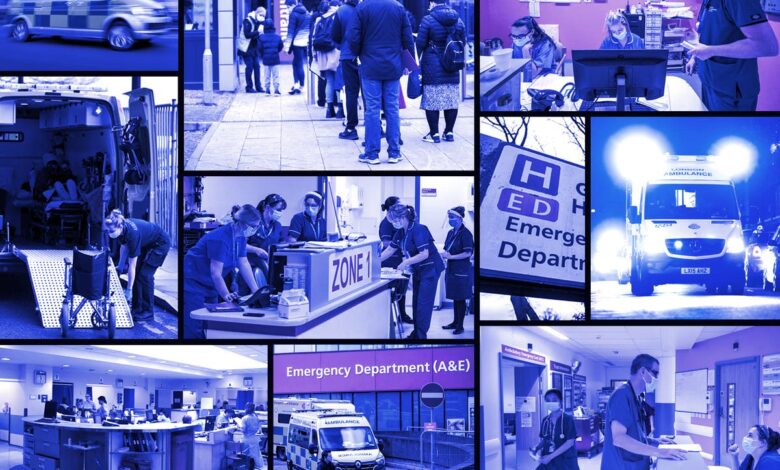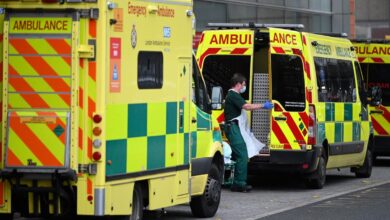‘Mayhem’ in A&E: The horrifying reality of Britain’s emergency care crisis

Overwhelmed hospitals are putting A&E patients alongside women on maternity wards and cancelling hundreds of cancer operations in bid to deal with the worst ever crisis in emergency care.
An investigation by The Independent has revealed an alarming escalation of the NHS crisis in all areas of the health service as new figures released on Thursday showed 54,532 patients waited 12 hours for an A&E admission in December, a monthly rise of 44.1 per cent.
As ambulance waits reached an average of 90 minutes for strokes and heart attacks, one patient described a Cardiff A&E as “mayhem” with no free spaces, people lying on the floor with oxygen tanks and queuing in hallways. The Independent also found:
Dr Simon Walsh, of doctor’s union the British Medical Association, said the health service was “in unprecedented territory, where harm is actually occurring week after week”. He added: “The situation now is far worse than I’ve ever experienced. We’ve never really thought that any government would let it get as bad as it is now.
“The thing that’s new is being in an environment where you feel unable to deliver safe care to even those with the highest need. It’s soul-destroying.”
Frank Newton, an 82-year-old with stage four chronic kidney disease, was rushed to Whiston Hospital near Liverpool by his daughter Andrea Newton on 28 December with suspected pneumonia. They had been told by their GP the wait for an ambulance would be 30 hours.
What followed, she says, was a “living nightmare” as they waited 56 hours on a trolley in a holding area. “One night I counted 19 ambulances outside the hospital, around 40 to 50 people in the corridors and maybe another 50 or more in the waiting room where it was literally standing room only,” Ms Newton said.
As her father writhed in pain and became increasingly delirious, Ms Newton sought help, only to be told he was “just one of 50 patients”.
Last month 2.2 million patients sought help at A&E, but only half of them were seen within the target of four hours. Earlier this week, we revealed the number waiting more than 12 hours had exceeded 50,000 for the first time.
The Commons’ health select committee announced it would investigate the link between excess deaths and long A&E waits after The Independent reported calculations showing delays could be contributing to 500 deaths a week.
Ambulance delays were also the worst on record, as the average response for the most urgent incidents, such as cardiac arrest, dropped to 10 minutes and 57 seconds – almost four minutes higher than the target. For category two emergencies, such as strokes, were an average of an hour and a half, compared with a target of 18 minutes.
Tom Johnson, a cardiologist in Bristol, said over Christmas one of his patients with chest pain was told no ambulances were available and his family had to drive him to hospital. He suffered cardiac arrest en route and, without a paramedic to offer treatment, he died. Dr Johnson said: “The system needs to change to save that man’s life. We are unable to provide the care we want despite our best efforts.”
The prime minister’s official spokesman said the delays were “obviously not acceptable”.
John Syers, 89, was taken to William Harvey Hospital in Ashford, Kent, shortly before Christmas after doctors suspected he had a tumour on his spine. Mr Syers, who is being treated for cancer, should have been taken to a ward while he waited for an emergency MRI scan.
Instead, he was put on a bed in a corridor that Mr Syers’ son, Paul Syers, says was referred to as the “A&E patient car park”. His son said: “He was distressed, seven metres away from a door that’s constantly opening and closing. He had no sleep all night. It was like a war zone, it was terrible.”
Paul Syers waited 46 hours for a scan
The next day he was moved but to another corridor, before finally having a scan 46 hours after arriving.
The overcrowding in emergency departments is forcing patients who are immunocompromised, and so cannot risk picking up infections, to take desperate measures in order to be seen by doctors.
Diana Isajeva, who is waiting for a life-saving kidney transplant, went to Heath hospital in Cardiff on 29 December suffering suspected shingles. She said: “[A&E] was honestly mayhem. There were no free spaces. No free seats anywhere. The whole waiting room was full of very seriously ill people. People were on the floor with oxygen tanks. There were people queuing up in the hallways – all the hallways were full of people on the trolleys. Nobody was wearing any masks, there was no Covid safety and no flu safety.”
Immunocompromised patients should be immediately moved to an area where the risk of infection can be controlled, such as a ward. But with no spaces available, Ms Isajeva instead had to wait in her car for 14 hours to be told a doctor was available. She said: “It was freezing cold on that day. I couldn’t go to the toilet inside the hospital because there is no network inside the hospital so, if anybody called me on my phone to come and see the doctor, they weren’t able to reach me. I had to go in the nearby bushes for the whole 14 hours.”
Diana Isajeva at Heath Hospital in Wales





